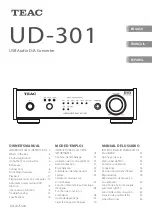
SERVICING
30
c. Low
temperature difference across coil.
d. Low amp draw at compressor
And the charge is correct. The compressor is faulty - replace
the compressor.
S-105B THERMOSTATIC EXPANSION VALVE
The expansion valve is designed to control the rate of liquid
refrigerant flow into an evaporator coil in exact proportion
to the rate of evaporation of the refrigerant in the coil. The
amount of refrigerant entering the coil is regulated since the
valve responds to temperature of the refrigerant gas leaving
the coil (feeler bulb contact) and the pressure of the refriger-
ant in the coil. This regulation of the flow prevents the return
of liquid refrigerant to the compressor.
Some TXV valves contain an internal check valve thus elimi-
nating the need for an external check valve and bypass loop.
The three forces which govern the operation of the valve
are: (1) the pressure created in the power assembly by the
feeler bulb, (2) evaporator pressure, and (3) the equivalent
pressure of the superheat spring in the valve.
0% bleed type expansion valves are used on indoor and outdoor
coils. The 0% bleed valve will not allow the system pressures
(High and Low side) to equalize during the shut down period.
The valve will shut off completely at approximately 100 PSIG.
30% bleed valves used on some other models will continue
to allow some equalization even though the valve has shut-
off completely because of the bleed holes within the valve.
This type of valve should not be used as a replacement for
a 0% bleed valve, due to the resulting drop in performance.
The bulb must be securely fastened with two straps to a
clean straight section of the suction line. Application of the
bulb to a horizontal run of line is preferred. If a vertical instal-
lation cannot be avoided, the bulb must be mounted so that
the capillary tubing comes out at the top.
THE VALVES PROVIDED BY DAIKIN ARE DESIGNED TO
MEET THE SPECIFICATION REQUIREMENTS FOR OPTI-
MUM PRODUCT OPERATION. DO NOT USE SUBSTITUTES.
S-106 OVERFEEDING
Overfeeding by the thermostatic expansion valve results in
high suction pressure, cold suction line, and possible liquid
slugging of the compressor.
If these symptoms are observed:
1. Check for an overcharged unit by referring to the cooling
performance charts in the servicing section.
2. Check the operation of the power element in the valve
as explained in S-110 Checking Thermostatic Expan-
sion Valve Operation.
3. Check for restricted or plugged equalizer tube.
S-107 UNDERFEEDING
Underfeeding by the thermostatic expansion valve results in
low system capacity and low suction pressures.
If these symptoms are observed:
1. Check for a restricted liquid line or drier. A restriction will
be indicated by a temperature drop across the drier.
2. Check the operation of the power element of the valve
as described in S-110 Checking Thermostatic Expan-
sion Valve Operation.
S-108 SUPERHEAT
The thermostatic expansion valve is factory adjusted to
maintain 7 - 9 degrees superheat of the suction gas. Before
checking the superheat or replacing the valve, perform all the
procedures outlined under Air Flow, Refrigerant Charge, Ther-
mostatic Expansion Valve - Overfeeding, Underfeeding. These
are the most common causes for evaporator malfunction.
CHECKING SUPERHEAT
Refrigerant gas is considered superheated when its tem-
perature is higher than the saturation temperature corre-
sponding to its pressure. The degree of superheat equals
the degrees of temperature increase above the saturation
temperature at existing pressure. See Temperature - Pres-
sure Chart on following pages.
CAUTION
TO PREVENT PERSONAL INJURY, CAREFULLY CONNECT AND
DISCONNECT MANIFOLD GAUGE HOSES. ESCAPING LIQUID
REFRIGERANT CAN CAUSE BURNS. DO NOT VENT REFRIG-
ERANT TO ATMOSPHERE. RECOVER DURING SYSTEM REPAIR
OR FINAL UNIT DISPOSAL.
1. Run system at least 10 minutes to allow pressure to stabilize.
2. For best results, temporarily install a thermometer on
the liquid line at the liquid line service valve and 4-6"
from the compressor on the suction line. Ensure the
thermometer makes adequate contact and is insulated
for best possible readings. Use liquid line temperature
to determine subcooling and vapor temperature to de-
termine superheat.
NOTE
: AN OPTIONAL METHOD IS TO LOCATE THE
THERMOMETER AT THE SUCTION LINE SERVICE
VALVE. ENSURE THE THERMOMETER MAKES ADE-
QUATE CONTACT AND IS INSULATED FOR BEST POS-
SIBLE READINGS.
3. Refer to the superheat table provided for proper system
superheat. Add charge to lower superheat or recover
charge to raise superheat.
Superheat Formula = Suct. Line Temp. - Sat. Suct. Temp.















































